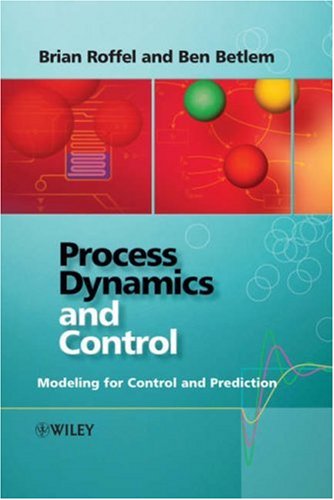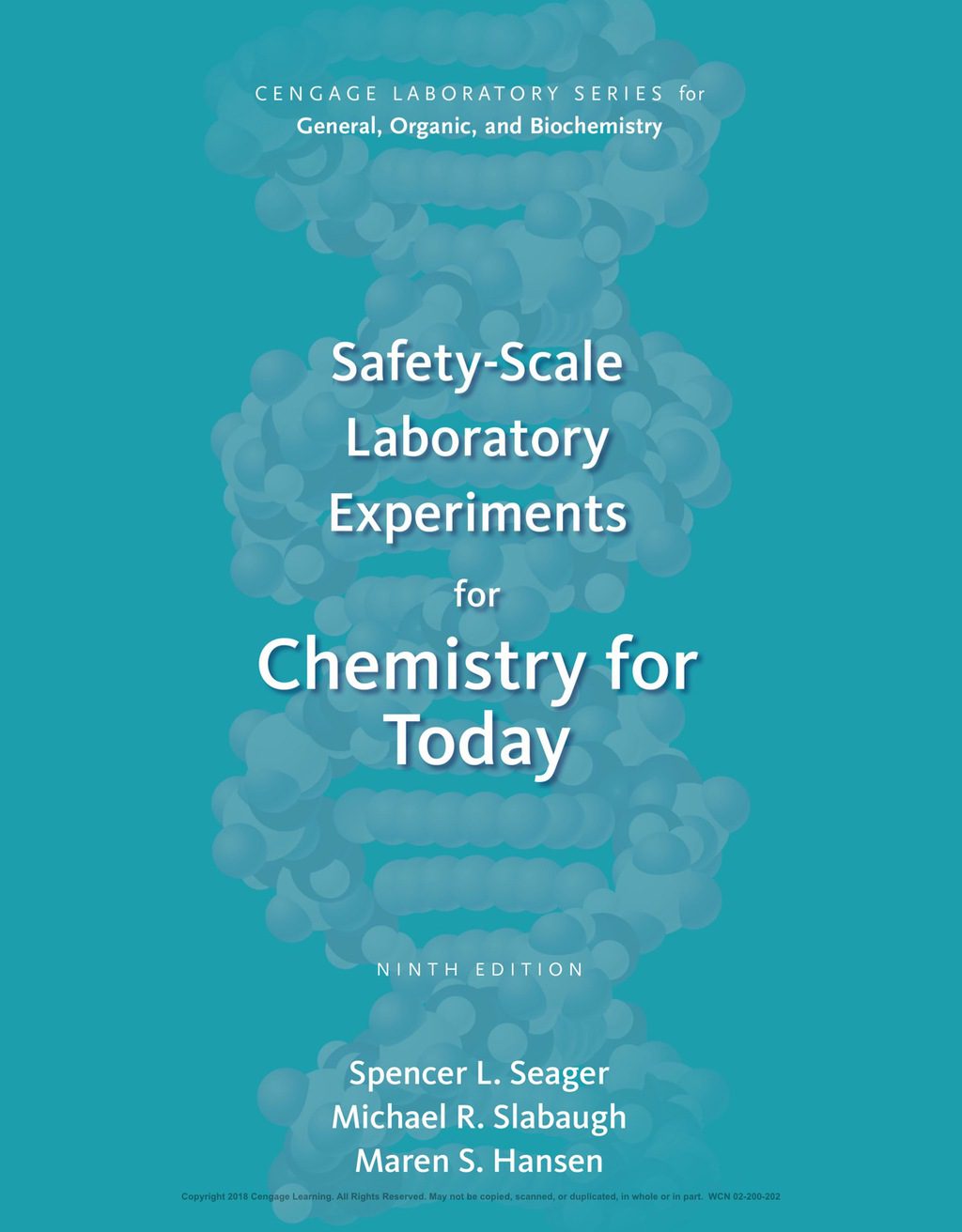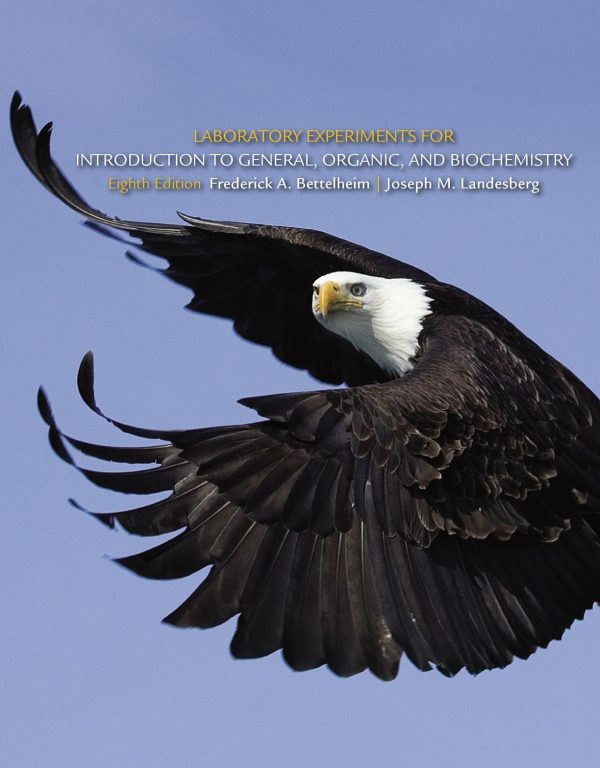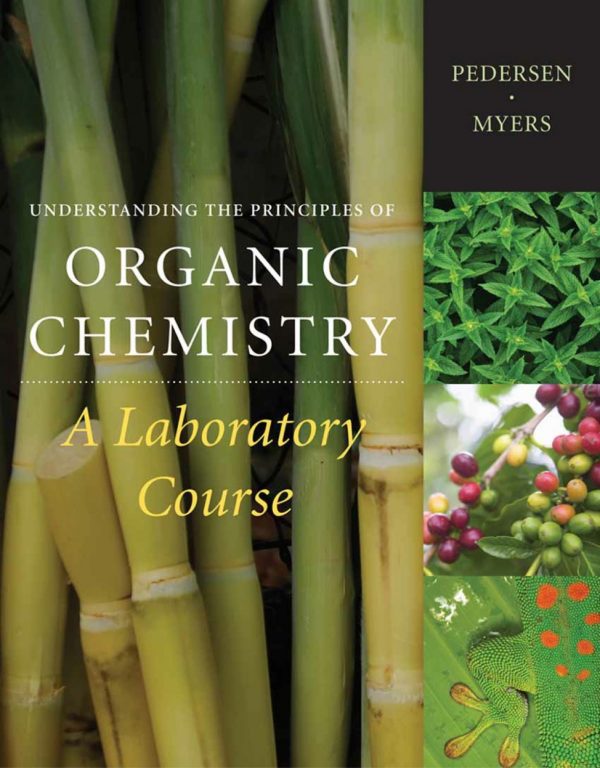Brian Roffel, Ben Betlem9780470016633, 0470016639, 0470016647
Table of contents :
CONTENTS……Page 8
FOREWORD……Page 14
PREFACE……Page 16
ACKNOWLEDGEMENT……Page 18
1.1 Application of Process Models……Page 20
1.2 Dynamic Systems Modeling……Page 21
1.3 Modeling Steps……Page 24
1.4 Use of Diagrams……Page 35
1.5 Types of Model……Page 39
References……Page 42
2.1 System States……Page 44
2.2 Mass Relationship for Liquid and Gas……Page 48
2.3 Energy Relationship……Page 57
2.4 Composition Relationship……Page 67
3.1 Environmental Model……Page 76
3.2 Procedure for the Development of an Environmental Model for Process Operation……Page 77
3.3 Example: Mixer……Page 87
3.4 Example: Evaporator with Variable Heat Exchanging Surface……Page 88
4.1 Behavioral Model……Page 90
4.2 Example: A Mixer……Page 96
5.2 Laplace Transform……Page 100
5.3 Useful Properties of Laplace Transform: limit functions……Page 102
5.4 Transfer Functions……Page 103
5.5 Discrete Approximations……Page 108
5.6 z-Transforms……Page 109
References……Page 114
6.2 Non-linear Process Models……Page 116
6.3 Some General Linearization Rules……Page 119
6.4 Linearization of Model of the Level Process……Page 121
6.5. Linearization of the Evaporator Model……Page 122
6.7. Linearization of the Chemical Reactor Model……Page 124
7.2 Stationary System and Operating Point……Page 128
7.3 Flow Systems……Page 129
7.4 Chemical System……Page 130
7.5 Stability in the Operating Point……Page 132
7.6 Operating Point Transition……Page 135
8.2 Simulation of the Level Process……Page 138
8.3 Simulation of the Chemical Reactor……Page 143
References……Page 145
9.1 Introduction……Page 146
9.2 Bode Diagrams……Page 148
9.3 Bode Diagram of Simulink Models……Page 154
References……Page 156
10.1 Introduction……Page 158
10.2 Accumulation Processes……Page 159
10.3 Lumped Process with Non-interacting Balances……Page 161
10.4 Lumped Process with Interacting Balances……Page 163
10.5 Processes with Parallel Balances……Page 167
10.6 Distributed Processes……Page 170
10.7 Processes with Propagation without Feedback……Page 173
10.8 Processes with Propagation with Feedback……Page 176
11.1 The Process……Page 180
11.2 Mixer with Self-adjusting Height……Page 183
12.2 Isothermal First-order Reaction……Page 188
12.3 Equilibrium Reactions……Page 191
12.4 Consecutive Reactions……Page 194
12.5 Non-isothermal Reactions……Page 197
13.1 Introduction……Page 204
13.2 First-order Reaction……Page 205
13.5 Tubular Reactor with Dispersion……Page 207
13.6 Dynamics of Adiabatic Tubular Flow Reactors……Page 211
References……Page 213
14.2 Heat Transfer from a Heating Coil……Page 214
14.3 Shell and Tube Heat Exchanger with Condensing Steam……Page 217
14.4 Dynamics of a Counter-current Heat Exchanger……Page 224
References……Page 225
15.1 Introduction……Page 226
15.2 Model Description……Page 227
15.3 Linearization and Laplace Transformation……Page 228
15.4 Derivation of the Normalized Transfer Function……Page 229
15.5 Response Analysis……Page 230
15.7 Example of Some Responses……Page 231
15.8 Separation of Multi-phase Systems……Page 232
15.9 Separator Model……Page 233
15.10 Model Analysis……Page 234
15.11 Derivation of the Transfer Function……Page 236
16.1 Column Environmental Model……Page 238
16.2 Assumptions and Simplifications……Page 239
16.3 Column Behavioral Model……Page 240
16.4 Component Balances and Equilibria……Page 241
16.5 Energy Balances……Page 244
16.6 Tray Hydraulics……Page 247
16.7 Tray Pressure Drop……Page 252
16.8 Column Dynamics……Page 255
Notation……Page 259
Greek symbols……Page 261
References……Page 262
17.2 Kinetic Equations……Page 264
17.3 Reactor Models……Page 266
17.4 Dynamics of the Fed-batch Reactor……Page 267
17.5 Dynamics of Ideally Mixed Fermentation Reactor……Page 271
17.6 Linearization of the Model for the Continuous Reactor……Page 273
References……Page 277
18.1 Introduction to Physiological Models……Page 278
18.2 Modeling of Glucose and Insulin Levels……Page 279
18.3 Steady-state Analysis……Page 281
18.4 Dynamic Analysis……Page 282
18.6 Introduction to Cardiovascular Modeling……Page 283
18.7 Simple Model using Aorta Compliance and Peripheral Resistance……Page 284
18.8 Modeling Heart Rate Variability using a Baroreflex Model……Page 287
References……Page 290
19.1 Need for Different Model Types……Page 292
19.2 Modeling steps……Page 293
19.4 Selection of Independent Model Variables……Page 294
19.5 Model Order Selection……Page 295
19.8 Model Evaluation……Page 296
20.1 Introduction……Page 298
20.2 Inner and Outer Product……Page 299
20.4 Gauss–Jordan Elimination, Rank and Singularity……Page 300
20.5 Determinant of a matrix……Page 302
20.6 The Inverse of a Matrix……Page 303
20.7 Inverse of a Singular Matrix……Page 304
20.8 Generalized Least Squares……Page 306
20.9 Eigen Values and Eigen Vectors……Page 307
References……Page 309
21.1 Examining the Data……Page 310
21.2 Detecting and Removing Bad Data……Page 311
21.4 Scaling of Variables……Page 314
21.5 Identification of Time Lags……Page 315
21.6 Smoothing and Filtering a Signal……Page 316
21.7 Initial Model Structure……Page 321
References……Page 323
22.1 Introduction……Page 324
22.2 PCA Decomposition……Page 325
22.3 Explained Variance……Page 327
22.4 PCA Graphical User Interface……Page 328
22.5 Case Study: Demographic Data……Page 329
22.6 Case Study: Reactor Data……Page 332
22.7 Modeling Statistics……Page 333
References……Page 335
23.1 Problem Definition……Page 336
23.2 The PLS Algorithm……Page 337
23.3 Dealing with Non-linearities……Page 338
23.4 Dynamic Extensions of PLS……Page 339
23.5 Modeling Examples……Page 340
References……Page 344
24.2 Empirical (linear) Dynamic Models……Page 346
24.3 The Least Squares Method……Page 347
24.4 Cross-correlation and Autocorrelation……Page 348
24.5 The Prediction Error Method……Page 350
24.6 Identification Examples……Page 351
24.7 Design of Plant Experiments……Page 356
References……Page 359
25.1 Introduction……Page 360
25.2 State Space Model Identification……Page 361
25.3 Examples of State Space Model Identification……Page 362
References……Page 367
26.1 Model Reduction in the Frequency Domain……Page 368
26.2 Transfer Functions in the Frequency Domain……Page 369
26.3 Example of Basic Frequency-weighted Model Reduction……Page 370
26.4 Balancing of Gramians……Page 372
26.5 Examples of Model State Reduction Techniques……Page 375
References……Page 379
27.1 The Structure of an Artificial Neural Network……Page 380
27.2 The Training of Artificial Neural Networks……Page 382
27.3 The Standard Back Propagation Algorithm……Page 383
27.4 Recurrent Neural Networks……Page 386
27.5 Neural Network Applications and Issues……Page 389
27.6 Examples of Models……Page 391
References……Page 398
28.1 Mamdani Fuzzy Models……Page 400
28.2 Takagi-Sugeno Fuzzy Models……Page 401
28.4 Example of fuzzy modeling……Page 403
28.5 Data Clustering……Page 405
28.6. Non-linear Process Modeling……Page 410
References……Page 416
29.2 Network Architecture……Page 418
29.3 Calculation of Model Parameters……Page 420
29.4 Identification Examples……Page 422
References……Page 429
30.1 Introduction……Page 432
30.2 Methodology……Page 433
30.3 Approaches for Different Process Types……Page 443
30.4 Bioreactor Case Study……Page 455
Literature……Page 457
31.1 Introduction……Page 458
31.2 Process Control Goals……Page 459
31.3 The measuring device……Page 463
31.4 The control device……Page 468
31.5 The Controller……Page 470
31.6 Simulating the controlled process……Page 471
References……Page 472
32.1 Purpose of Control……Page 474
32.2 Controller Equations……Page 476
32.3 Frequency Response Analysis of the Process……Page 477
32.4 Frequency Response of Controllers……Page 479
32.5 Controller Tuning Guidelines……Page 481
References……Page 483
33.1 Procedure……Page 484
33.2 Example: Desulphurization Process……Page 491
33.3 Optimal Control……Page 494
33.4 Extension of the Control Scheme……Page 497
33.5 Final Considerations……Page 504
34.1 Control Scheme for a Distillation Column……Page 506
34.2 Material and Energy Balance Control……Page 514
Summary……Page 519
Appendix 34.1 Impact of Vapor Flow Variations on Liquid Holdup……Page 520
Appendix 34.2 Ratio Control for Liquid and Vapor Flow in the Column……Page 521
35.1 Introduction……Page 522
35.2 Initial input–output Variable Selection……Page 524
35.3 Extension of the Basic Control Scheme……Page 528
35.4 Selection of the Final Control Scheme……Page 529
References……Page 533
A1: Problem Analysis……Page 534
A2: Dynamic Process Model Development……Page 536
A3: Dynamic Process Model Analysis……Page 540
A4: Dynamic Process Simulation……Page 543
A5: Process Control Simulation……Page 549
Hints……Page 553
Index……Page 554







Reviews
There are no reviews yet.